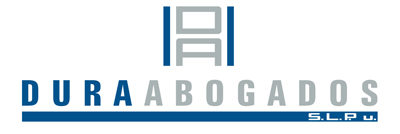
This includes reading the entire contract and comprehending the billing method outlined in it — including what kind of record keeping and administration will be required to apply for payments. The completed contract method has a similar setup to the percentage of completion method. However, it’s best used for small jobs that are relatively short-term or when a project brings an inherent risk to job completion beyond what is typical.
- They’re payment applications detailing the expected amount that you’ll invoice.
- At any rate, all this information proves that construction contracts have long production cycles that often last for longer than a year.
- However, this is a slippery slope, and you should consult with your accountant before moving forward with this method.
- Keeping up with billing throughout the project cycle will avoid chasing down documentation from long-finished tasks and cover all the bases for backup documentation.
- In a perfect world, construction billing would be correct, quick, and easy.
Automated Payment Processing
- Another benefit is the option to include a Guaranteed Maximum Price clause in the agreement, which will put a spending cap on the amount contractors can spend.
- It also helps track project profitability and identify areas where the company can improve its cost efficiency.
- It keeps your business organized while providing clear indications to the client.
- This includes reading the entire contract and comprehending the billing method outlined in it — including what kind of record keeping and administration will be required to apply for payments.
- However, not all specialize in construction accounting — but rather standard or regular accounting.
One of the most popular billing methods, fixed-price billing, is based on a detailed estimate that provides the total cost of a project. Unlike other billing methods, fixed-price billing means that the client and construction company agree to a set price for the services at the onset of a project — thus the name fixed price. A contractor using guaranteed maximum price billing sets an upper limit to the cost of completing a construction project. Unlike lump sum billing, which allows contractors to keep additional profits if they manage to complete a project cheaper than expected, GMP billing allows the customer to keep the savings. In this way GMP can be seen as a medium ground between lump sum and time and materials billing.
Key Components of the Construction Billing Process
- For instance, if 30% of the project is completed, the contractor issues an invoice for 30% of the agreed total contract value.
- Each project is its own unique beast, so coming up with a one-size fits all sample construction invoice is a fool’s errand.
- A construction takeoff refers to the process of using construction plans and documents to determine exactly what materials a contractor will need to complete a project.
- Time and Materials billing provides significant flexibility, particularly suitable for projects with uncertain or changing requirements.
- In summary, retainage billing is widely used in construction and other project-based industries to ensure quality and fulfillment of contractual obligations.
You also need to be very clear with the client what constitutes a milestone and who signs that off – as it could lead to disputes later down the line. The client hasn’t yet paid their dues and you’re increasingly beginning to wonder whether they’re actually going to. If you’re already a pro and want to jump straight to finding the right tool – check out our recent look through the runners and riders for the best construction invoicing software. The steps required in a project’s journey to completion are importation to how successful the project will be. I am reviewing a schedule of value for a project that does not have a % of the project total assigned to project closeout.

How to Grow an Efficient Construction Business
Progress billing will see contractors prepare and submit invoices at different project stages. This method is usually done on a percentage-of-completion https://www.bookstime.com/articles/truckers-bookkeeping-services basis following a payment schedule. This can be another solid option for contractors if the scope of work needs to be clarified.
Governor Newsom Signs Infrastructure & Budget Legislation to Build More, Faster Governor of California – Office of Governor Gavin Newsom
Governor Newsom Signs Infrastructure & Budget Legislation to Build More, Faster Governor of California.
Posted: Mon, 10 Jul 2023 07:00:00 GMT [source]
Pros and cons of the best construction accounting software

However, as your business scales in size and takes on bigger, more complex jobs, the cash basis of accounting just won’t be viable or permitted by government organizations. Here, the contractor will charge the client’s account directly for any materials and simply add a standard hourly/daily rate on top for their labour. The difference here is that clients are charged when pre-agreed milestones (set at the start of the project) are complete. For example, if 30% of a project is complete in a month, you will get 30% of the total job cost in that period.
There isn’t any particular advantage to using it long-term that we can point to from a contractor’s perspective. Let’s assume for the sake of argument that you don’t have time to manually track every individual hour worked, material construction billing methods purchased and equipment rented. The pros and cons are almost identical to time and materials here – the only difference is how your fee is charged. To do that, the percentage completion method is used to calculate costs.

